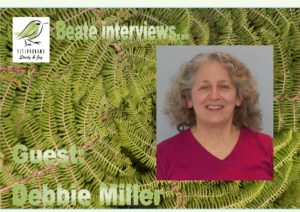Acts 10:34,37-43; Colossians 3:1-4; John 20:1-9
In Acts, we encounter Cornelius and Peter. Both men had just had a vision.
Cornelius was told in the vision that he was to look for Peter and where to find him. Peter had a vision of being asked to eat animals that were considered as unclean according to Jewish traditions. However, in the dream he was told: “Do not call anything impure that God has made clean.”.
Both men were wondering about the meaning of the visions they had. Cornelius, a Roman centurion, follows the instructions he had received in his vision and visits Peter who reluctantly mixes with the gentile but then realises the connection to his own vision.
So, Peter tells the centurion and his friends about the accounts of Jesus’ Miracles, Death and Resurrection. Before anybody could doubt that Peter had not actually met the risen Christ but only had a vision of him, he reiterates that he had shared a meal with Jesus. Eating together is a sign of life.
The encounter of Cornelius and Peter might have been the first missionary work and might have come as a surprise even to the Jewish followers of Jesus.
In Paul’s Letter to the Colossians, he refers to what it means to follow Jesus – it is to die with Christ, to raise with Christ and to be alive in Christ. Once this is understood, earthly matters will become secondary.
In the Gospel according to John, we learn that Mary Magdalen went to Jesus’ tomb while it was still dark. It is a darkness that will pass. We are reminded of another passage of John where it says that “Anyone who claims to be in the light but hates a brother or sister is still in the darkness” (1 John 2:8-9). Jesus is the true light, but she hasn’t encountered the risen Christ yet. She sees that the rock that covered the entrance to Jesus’ tomb was moved away and immediately runs to tell Peter and the disciple who Jesus loved. Did Mary Magdalen actually see that the tomb was empty? We don’t know. It is not clear if she had a candle with her. Rolling away a big rock would be a human effort, so she would be afraid that someone had taken the body – and maybe would also be afraid that whoever had done so could come after her, too.
Mary Magdalen turns around and runs away from the tomb to inform Peter and the disciple who Jesus loved. Those two now run to the tomb. Peter is the third person at the tomb after Mary Magdalen and the disciple who Jesus’ loved.
However, Peter is the first one who enters the tomb. Peter was the authority and was therefore given the privilege to enter the tomb first.
It is interesting to read that all three had been running. There are not so many accounts in the Bible that mention people running. The only other one that comes to my mind is the Prodigal Father who runs towards his lost son.
Why did they run? Out of curiosity, fear or unbelief? If Peter didn’t believe Mary Magdalen, there would be no reason to run as Jesus wouldn’t have been moved, but if he believes in her words, he would have known that Jesus had risen from the dead and was not likely to be found so easily.
Peter looks inside the tomb and sees the linen cloth on the ground. A sign that Jesus is alive? If somebody had stolen the body, it would not have been likely that he would have carried the body but leaving the linen behind.

The situation reminds me more of a broken eggshell on the floor indicating that the bird had left its shell and is alive now. New birth. Jesus has left earthly belongings behind. He is now fully divine and doesn’t need the linen shell anymore.
What do we leave behind when we follow Jesus?
We are encouraged to trust in the Resurrection and in God’s love – even if we feel rejected or not appreciated. Jesus is the true light and knows us.
In this true light we will recognise our sisters and brothers and will spread the hope and trust that “The stone which the builders rejected has become the corner stone.” (Psalm 118:22)
He is risen – Alleluia!



